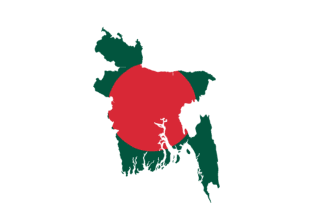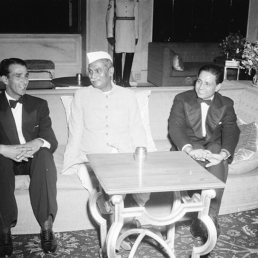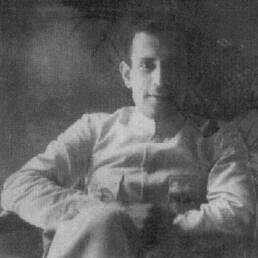Shadhin Bangla Football Dal
A few good men who hoisted a nascent flag and brought liberation
During July 1971, amidst a gruesome civil war, a band of thirty young men from East Pakistan decided to spread the message of freedom. So, instead of bullets and shells, they opted for the most powerful tool that connects the majority of the world with the collective emotions of love, respect, and peace: Football. The result? On 16th December 1971, Bangladesh emerged as a free country.
On 16th December 2021, Bangladesh will celebrate its 50th Independence Day. As the whole nation will be in a jubilant mood, a few old souls will be remembered through the history of their revolutionary road. A bunch of enthusiastic and highly motivated men who went to war to build a free country without any arms or ammunition.
The outcome of the Aligarh Movement during the later half of the 19th century started to create a secular political identity amongst the British Indian Muslims. Soon after, as the All India Muslim League was formed, the idea of Pakistan Movement came into life and Muhammad Ali Jinnah was at the fulcrum of it. Despite widespread opposition from prominent Muslim personalities like Maulana Abul Kalam Azad, Khan Ghaffar Khan and institutions like All India Azad Muslim Conference and Jamiat Ulema-e-Hind, on 14th August 1947, the new Dominion of Pakistan became independent and Jinnah was sworn in as its first governor general.

However, the dwellers of the newly free land were diverse; there was a plurality of thoughts,religion culture and language . The tension began to mount as the majority of the East Pakistani populaton who were Bengali, started to feel oppressed when they refused to accept Urdu as the official state language. Abul Kalam Azad, the then President of the Indian National Congress and the primary opposition of Jinnah’s proposal of partition, predicted this beforehand. In an interview with Shorish Kashmiri, the chief editor of the weekly Chattan magazine, somewhere during April 1946, he said – “I can only spot grave dangers in Jinnah’s demand for Pakistan. Note something else as well. Bengal has so far eluded Jinnah’s scrutiny. And he is yet to know that Bengal simply does not yield to outside dominance and authority. Bengali will protest — sooner or later. I believe East Pakistan can never put up with the supremacy of West Pakistan — the two can never co-exist. Their faiths are disparate; what else is to bind the two? The only reality of being Muslims can hardly be a cohesive factor.”[1].
Although East Pakistan had a larger population, they had very little political influence over the decisions made at Islamabad, the capital city which was as far as 2000 miles away in the West of the country. In the name of religious superiority, the westerners deprived the easterners in every possible way. The majority of the common budget was allocated for the development of the West side of the country. Jute, cultivated in the East, had its price determined in the West, wiping away more than 50% of the profit and, on the other hand, apples, grapes and woolen garments that were produced in the West were sold at a price 10 times higher in the East.
Awami League party led by Sheikh Mujibur Rahman (also known as Bangabandhu) became the sole voice of the oppressed from East Pakistan during the mid-sixties. As the Bengali nationalist movement started to gain nationwide momentum, a frown creased the forehead of the Pakistan Peoples Party (PPP). PPP used the intelligence agency to monitor Mujib’s movement and later imprisoned the top tier of the party to cease the thrust of the movement. The conspiracy was in vain as the whole of East Pakistan rose as one, demanding Mujib’s release. Nationwide rallies and protest marches forced the ruling party to release the prisoners. By then the air of Pakistan was echoing the Bengali slogans, East Pakistan had already become a different country – “Tomar Amaar Thikana, Padma, Meghna, Jamuna (Yours is my address, Padma, Meghna, Jamuna)”[2].
The two sides of the nation reached the apex of disagreement in December 1970[3] when Awami League won the general election but General Yahya Khan, President of the PPP refused to hand over the power. Mujib’s next move made it clear that within just two decades of freedom, the people of East Pakistan again felt the need for liberation. On 7th March 1971, “Bangabandhu” Mujib addressed an ocean of humanity – “This time the struggle is for our freedom.”[4]
In response, the Pakistani army recruited local goons from Jamaat-e-Islami[5] to instigate communal violence which they then used to unleash genocide and uproot all oppositions. On 25th March 1971, the Pakistani armed force took control over East Pakistan (known as the Operation Searchlight) as the verbal war changed its form into bloodshed, rapes, and debris of dead bodies. A provisional government was formed in East Pakistan which later shifted its base to Calcutta, India as a government in exile. They secretly funded guerrilla warfare, supported by Indian armed forces and intelligence services in refugee camps across the border which later formed “Mukti Bahini”, the military wing that went on to war against Pakistani armed forces.
 Saidur Rahman Patel, a professional football player in the premier division and Pakistan PWD (Public Works Department) team, came up with a vision to form a football team that would act as an exponent of the revolutionary movement and spread the word of liberation. He proposed the idea to Shamsul Haq, the General Secretary of the Awami League who then took the opportunity to present it to the first Prime Minister of unliberated Bangladesh, Tajuddin Ahmad.
Saidur Rahman Patel, a professional football player in the premier division and Pakistan PWD (Public Works Department) team, came up with a vision to form a football team that would act as an exponent of the revolutionary movement and spread the word of liberation. He proposed the idea to Shamsul Haq, the General Secretary of the Awami League who then took the opportunity to present it to the first Prime Minister of unliberated Bangladesh, Tajuddin Ahmad.
“I proposed my idea to Tajuddin Ahmad that I wanted to form a Swadhin Bangla Football Dal here.
He asked me “What made you think of this?”
I replied, “I want to do something for the country as a football player to help our freedom fighters and to raise awareness amongst the general public.”
Tajuddin Ahmad then stood upright and hugged me and said “Patel, young chap, how did you come up with such a beautiful thought!! You have my full support. Do you think you can achieve this?”
I replied “Inshallah, we can”.”[6] – Saidur Rahman Patel recalled during one of his interviews.
Having been promised the required permission from Indian Football Association (IFA) and a practice field for the team, Tajuddin Ahmad handed over Rs. 14,000 to start the venture. Soon the recruitment process started. Regular announcements were made from Akashbani (the national public radio broadcaster of India) and the Shadhin Bangla Betaar Kendro inviting enthusiasts, living in the refugee camps scattered across the borders to show up for a trial. As many as 30 people showed up from whom 25 were selected by Nani Basak, who was appointed as the team coach. And thus “Shadhin Bangla Football Dal” was formed to play fundraising matches in India to support the Liberation War. As the team started its tour, the news spread like wildfire and received overwhelming response, and in no time, the team strength went up to 36. Zakaria Pintoo was made the skipper and Pratap Shankar Hazra his deputy. The final squad included some revered names like Kazi Salahuddin, Enayetur Rahman Khan and Shahjahan Alam.
Kazi Salahuddin was the young prodigy of Mohammedan Sporting Club, the leading football club of East Pakistan. The 17-year-old star went to West Pakistan to play in the regional championship for Dhaka. His impressive performance did not go unnoticed as he was asked to join the Pakistan national football team after the tournament. Just as he came back to his family in Dhaka before making up his mind, the war broke out. The young Salahuddin did not have any second thoughts before joining a guerrilla training camp despite his family’s strong resistance. It was during his time at a guerrilla camp that he met a photojournalist from Calcutta while the team was already on tour. The journalist convinced him of the importance of utilizing his skills in the appropriate field and immediately with his help, he flew to Calcutta on a cargo plane of the India Air Force to join the squad. He then played the matches under the pseudonym ‘Turjo Hazra’[7] (Vice captain Pratap Shankar Hazra let him borrow his surname) to ensure his family’s safety in the war-torn East Pakistan.
The inaugural match was hosted at the Krishnanagar Stadium in West Bengal, India on 24th July 1971. The visiting team was up against Nadia Ekadosh. People were seen climbing on top of walls and trees, occupying terraces of neighboring houses as the small venue was packed to its capacity. Much to the agitation of the 15,000 odd crowd, Shadhin Bangla Football Dal refused to kick-off the match unless they were allowed to raise the flag of Bangladesh, a country yet to make its existence on the world map. As the tension began to mount, skipper Zakaria Pintoo was allowed to raise the flag. “When Bangabandhu asked us to join the war with whatever we had in his speech on 7th March 1971, I thought to myself, I have nothing but football to offer.”[8] – Pintoo recalled the moment during one of the interviews: “I still remember that day. It is the most memorable moment of my life being the first person to hoist the Bangladesh flag outside the country.”[9] – he said. “We sang ‘Amar Shonar Bangla’ (Later it became the national anthem of liberated Bangladesh) and then paraded the field with our flag and heads held high.”[10] – Pratap Shankar Hazra stated 40 years later in an interview. The hard-fought match ended in a 2-2 draw.
The next match was against the mighty force of Asian football, Mohun Bagan, captained by the charismatic Chuni Goswami. The controversy from the previous match had FIFA intervened into the match and forced IFA that Mohun Bagan had to play the match under a different name. They agreed and played the match under the banner Gostha Pal XI (A legend of Indian football and the first captain of Indian national team). The hosts registered a convincing 4-2 victory over the visitors despite going down by a goal from Kazi Salahuddin after just 13 minutes into the match. “The day I took over as the captain of Mohun Bagan, I desired to do something for the freedom movement…With all our support for the game, we stood next to them in the freedom struggle”[11] – Goswami was quoted after the match.
Shadhin Bangla Football Dal secured an emphatic 4-2 win against a Calcutta XI side on 14th August. It was Pakistan’s Independence Day. Prior to the kick-off, the footballers from the visitor’s team pulverized a Pakistani flag, set it on fire and threw it to the stands, sending a clear message to Islamabad. However, the match against Sportsweek XI recorded the highest attendance in Bombay, Maharashtra. Khalid Ansari, the editor of Sportsweek, took the pivotal role in organizing the match in support of Bharat-Bangladesh Maitry Samity which ended 3-1 in favor of the visiting side. The then Indian cricket team captain, Nawab Mansoor Ali Khan Pataudi captained and scored the only goal for the hosts. Bollywood star Dilip Kumar also featured in the match and later went on to donate Rs. 1 Lakh for the cause. The Nawab himself had given around Rs. 20,000 to the fundraiser. The presence of Bollywood stars like Sharmila Tagore and famous music director Sachin Dev Burman contributed largely to the sold-out venue. Close to Rs. 2,00,000 was raised from the sale of tickets alone.

Shadhin Bangla Football Dal played their final match against Balurghat XI. The match was more of an emotional reunion as the team went out to meet the liberation fighters from Balurghat’s guerrilla training camp.
The team was set to play their next match in Delhi when they received the life-altering news . On 3rd December 1971 evening, the then Prime Minister of India, Indira Gandhi declared war against Pakistan and within two weeks, Pakistan armed forces officially surrendered. The People’s Republic of Bangladesh became a reality on 16th December 1971.
Over the course of four and a half months, the Shadhin Bangla Football Dal played 16 matches in India. Out of which they won 12, lost 3 and drew 1. The result of the matches however, reflected broadly on the fate of their nation. An independent land at last. During the tour, the team managed to collect 5,00,000 Bangladeshi Taka to support their fellow comrades on the battlefield. The awareness they created through the exhibition matches amongst the people of India played the catalyst’s role in Indira Gandhi’s decision to go to war which is safe to assume had saved at least a couple of thousands lives. The Bangladeshi team proved that you don’t need to resort to violent means to win a country and its people. Although they did not receive the medal of honor, they had won a war, they had won hearts and football was their weapon of mass liberation. As Zakaria Pintoo had rightly said – “Teams will come and teams will go, but there won’t ever be a team like ours.”[12].
References & Bibliography
- [1][2][4] Haider, Daud. “How Bangladesh was born” from The Indian Express. The Indian Express. Accessed March 26, 2021. https://indianexpress.com/article/opinion/columns/bangladesh-liberation-independence-day-1797-war-east-pakistan-7245363/
- [3][5] Zakaria, Anam. “Remembering the war of 1971 in East Pakistan” from Al Jazeera. Al Jazeera. Accessed December 16, 2019. https://www.aljazeera.com/opinions/2019/12/16/remembering-the-war-of-1971-in-east-pakistan
- [6] “Bijoy ay choturtho Bangly, part-3”. YouTube video. 9:50. Posted by “Probash bangla TV”. December 10, 2012. https://www.youtube.com/watch?v=Vb0ufTXAymQ
- [7][8][10][12] Khan, Tamanna. “History of the Masses” from The Daily Star Archive. The Daily Star. Accessed March 23, 2012. http://archive.thedailystar.net/magazine/2012/03/04/cover.htm
- [9][11] Dasgupta, Shirsho. “A Play For Independence: The Forgotten Story of Bangladesh’s Football Revolutionaries” from VICE Sports Staff. VICE. Accessed March 21, 2017. https://www.vice.com/en/article/ypke7w/a-play-for-independence-the-forgotten-story-of-bangladeshs-football-revolutionaries








